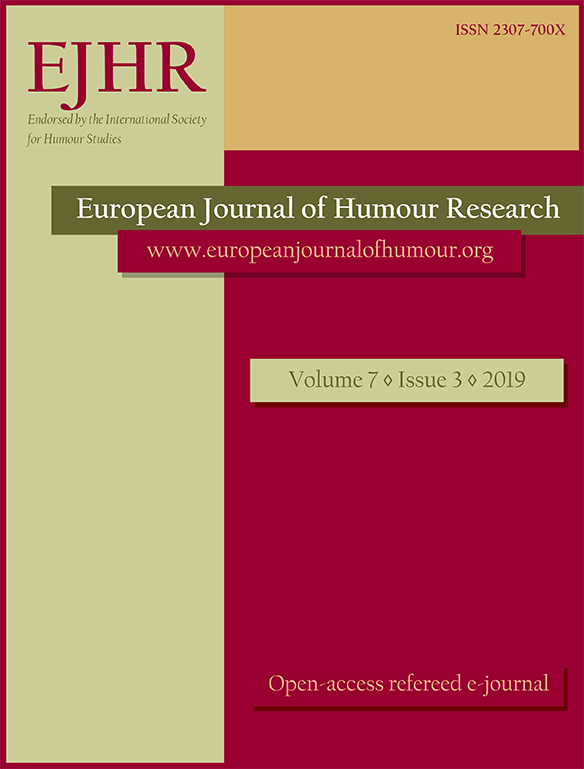
We kindly inform you that, as long as the subject affiliation of our 300.000+ articles is in progress, you might get unsufficient or no results on your third level or second level search. In this case, please broaden your search criteria.

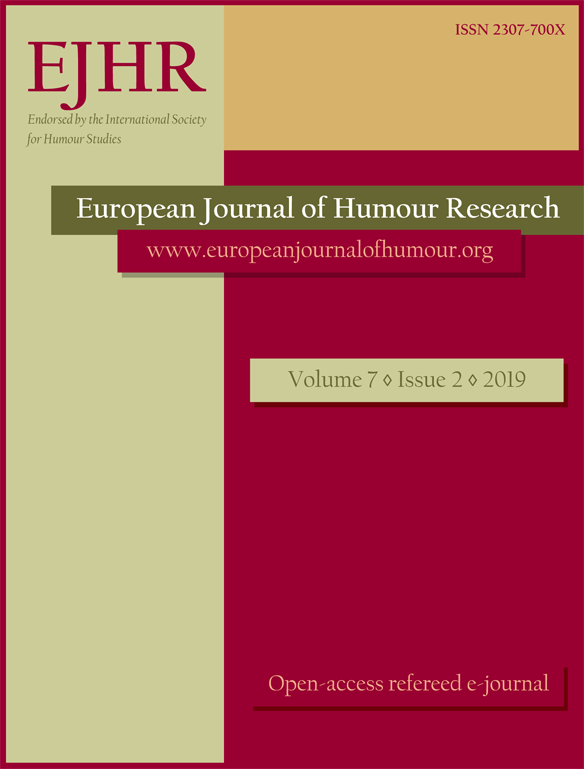
This paper assesses the results of a multimodal analysis of humorous instances found in a collection of 14 interviews from The Late Show with Stephen Colbert. The interviews have been imported and annotated in ELAN for head movements and face gestures. Only the interviewees’ remarks are studied in order to ensure the analysis of spontaneous speech, avoiding mostly pre-scripted host’s comments and questions. The results demonstrate that there are no gestures consistently and recurrently paired with humour. Therefore, none of the multimodal cues found in the sample can be considered markers of humour. Furthermore, the functions of gestures identified are consistent with the uses reported in previous multimodal studies of humorous and non-humorous communication found in the literature.
More...
This research aimed to explore gender stereotypes depicted in online sexist jokes collectedfrom laughfactory.com. Linguistically speaking, jokes as a subtype of humour have become acommon phenomenon in our everyday lives. Unfortunately, not all jokes can bring positivevibes for everyone. Yet, these forms of jokes are still commonly found, especially on theInternet. Some online sources, including websites of jokes, present a lot of collections of jokesfor fun, but a number of the jokes are categorized as sexist jokes, which might also beregarded as offensive in a certain context. Data were collected from the laughfactory.comwebsite and then were analysed by using the three-dimensional model of Critical DiscourseAnalysis (CDA) and the General Theory of Verbal Humour (GTVH). Results showed that themajority of the jokes observed were targeted at women (90%) and a small number wastargeted at men (10%). Women were stereotyped as sexual objects, emotionally expressivebeings, homemakers, being talkative, being stupid or brainless, and belonging to a lower classthan men. Men, on the other hand, were stereotyped as worse than women.
More...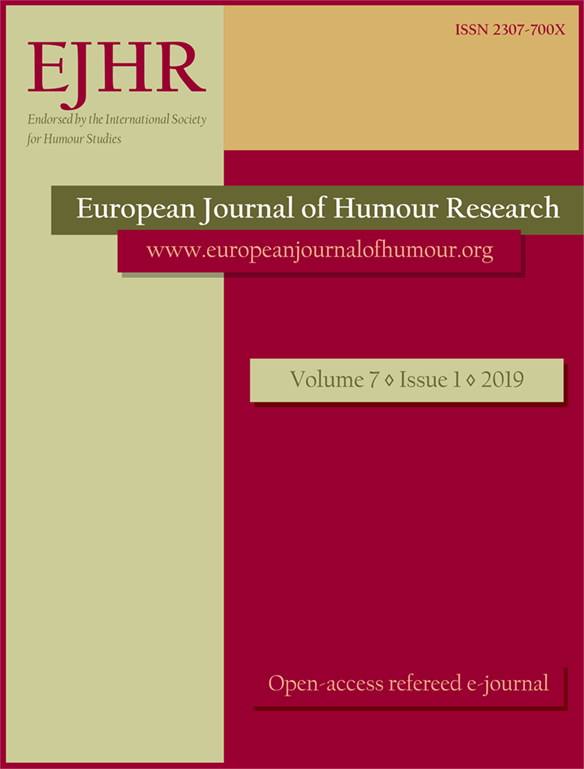
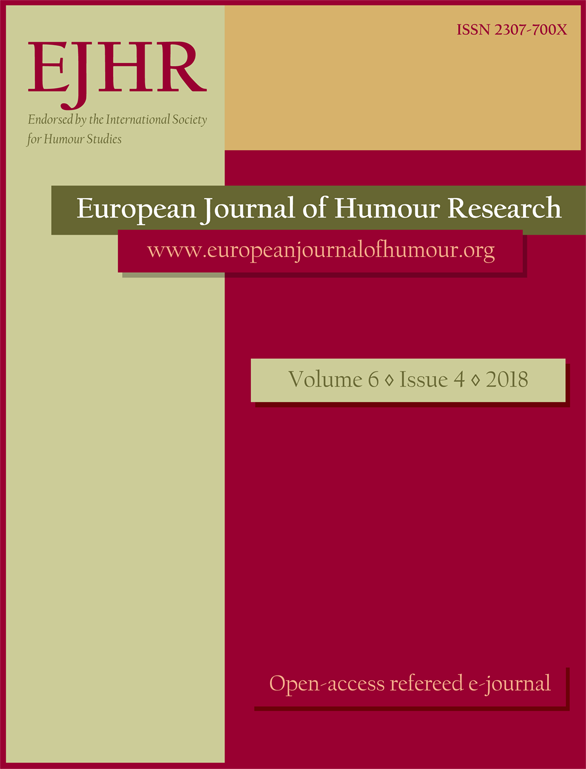

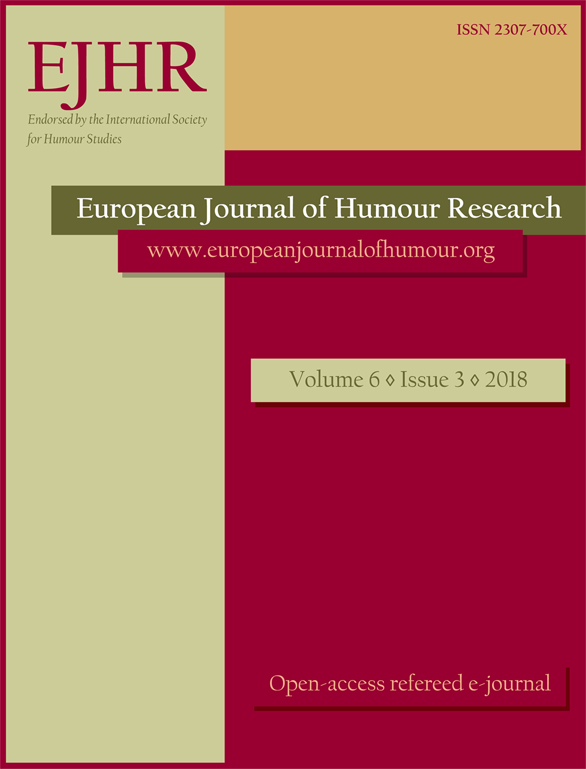
Incongruity theories maintain that the core of humour is in interplay between meanings. Two incompatible meanings – of situations, verbal utterances or actions – are juxtaposed, one replacing the other or colliding with it. In this paper, I suggest that often the game is not played between two meanings, but between meaning and its carrier. I provide as examples two families of jokes and one general type of humour sharing this mechanism. One of the two families comprises jokes of self-reference, and the other consists of jokes based on deflation of symbols, which means using them in a concrete sense. The general type of humour is the subject of Bergson’s 1900 theory of the comic, mechanical behaviour where flexible human reaction is expected. The mechanism common to all three is a shift of weight from meaning to its carrier. This mechanism is then traced also in other jokes, suggesting possible universality.
More...
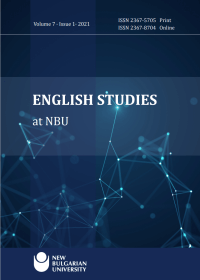
This article explores the assimilation politics in Mira Jacob’s novel The Sleepwalker’s Guide to Dancing (2013). The intersection of memory, trauma, and mourning with reference to immigrant experience is discussed. In terms of assimilation, Barkan’s six stage model is critiqued, and diasporic ‘hybridity’ is proposed as an alternative to the notion of total assimilation. In the analysis of traumatic experience, the paper makes reference to Caruth’s formulations of the ‘abreactive model’. The Sleepwalker’s Guide to Dancing is a transcultural text that represents the gap that truly exists between the first-generation immigrants and their offspring. It is a typical trauma novel featuring timeless and unspeakable experiences. The novel does not present a postcolonial collective trauma but invariably an example of diasporic imagined trauma. By presenting two contrasting generations in her novel, Mira Jacob attempts to highlight the dilemmas that baffle diasporas in the United States particularly of those that resist assimilation. Much of the narrative projects the haunting presence of home, and the anguish of personal loss experienced by first generation immigrants. Moreover, the novel questions the nostalgic and romantic engagements with the past and it promotes a bold affirmation of the culture of the adopted land. In other words, Mira Jacob calls for more genuine engagements with the new culture that the second and the third-generation immigrants are more exposed to than their home culture because their in-between status leaves them with no choice.
More...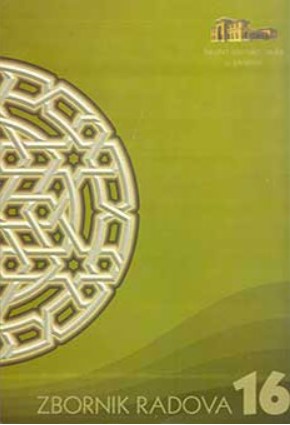
The paper deals with the origin and development of classical grammar school: Basra, Kufa and Baghdad. The cause of their creation is mistakes in speaking and reading of the Qur'anic text. All examples of these errors and biographies of the grammarians, with some minor modifications, are taken from the introduction to the work Dirasatun tatbiqijje fin-nahw ve-Sarf. The author of the work is Professor Abdu l-Semi 'Shaban, my professor at the undergraduate and postgraduate studies in Cairo. The paper presents translation of the introduction to this work. In this paper, we meet a number of clients who have studied Arabic grammar, so hence this science is often referred to as the science of clients or residents. The work is full of controversies between al-Kisa'i and al-Jezidi and between al-Muberrid and Sa'leba, and one of the sharpest controversies was conducted between Sibevejh and al-Kisa'i in the presence of the Caliph, and other officials in which al-Kisa'i was declared the winner. It was a political judgment. Kufa was closer to Baghdad, geographically and politically. The Grammarians of Kufa were closer to the court than the grammarians of Basra.
More...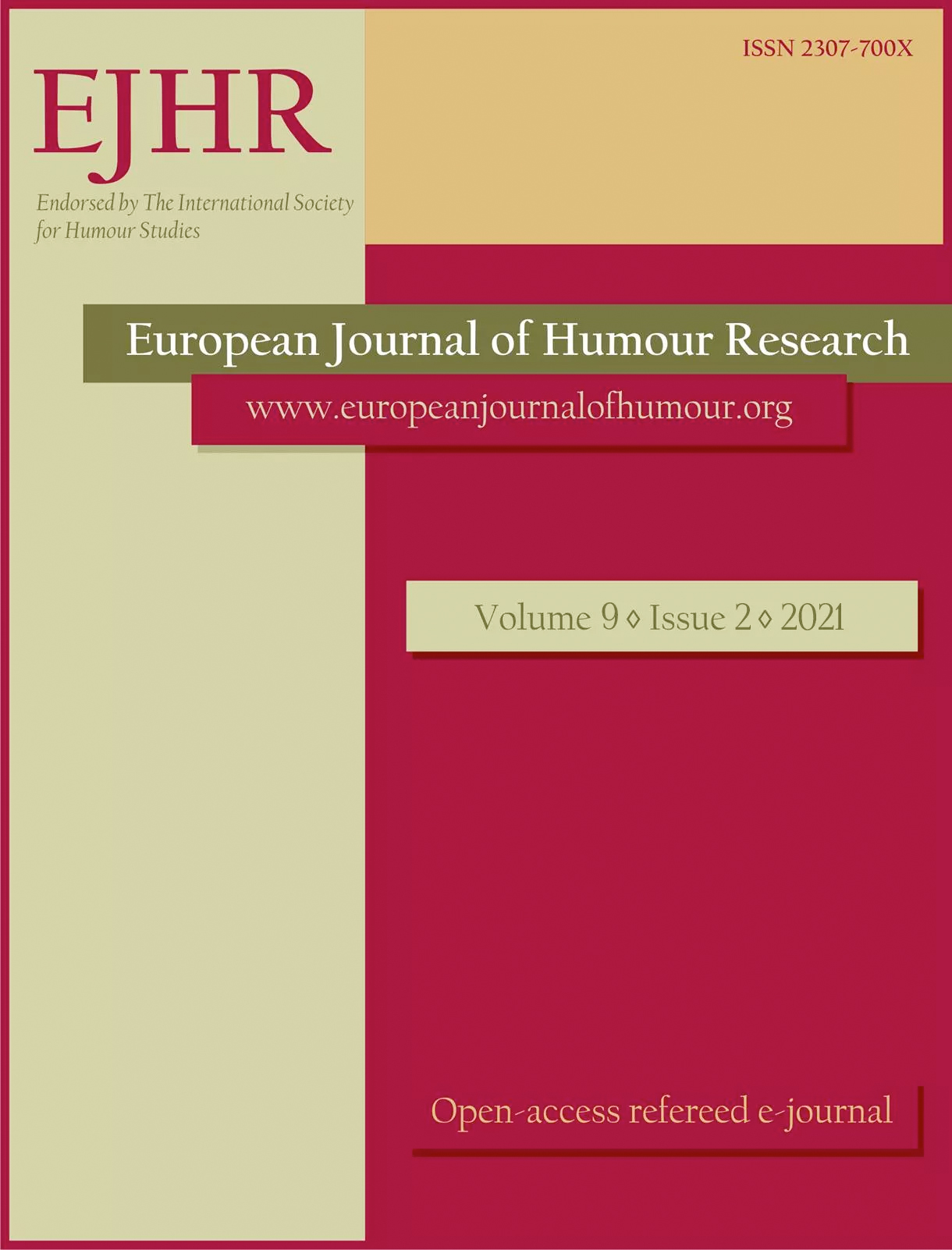
The article highlights the problem of interaction of the ancient Egyptian laughter culture with the category of sacred. A person is confronted with the fact that the examples in question can often be phenomena of a different order, and the use of terms such as “carnival” or even “religion,” “temple” or “priest” in relation to ancient Egypt requires an additional explanation. We find “funny” images on the walls of tombsand in the temples, where the Egyptians practiced their cult. In the Ramesside period (1292-1069 BC), a huge layer of the culture of laughter penetrated the written tradition in a way that Mikhail Bakhtin called the carnivalization of literature. Incredible events are described in stories and fairy tales in a burlesque, grotesque form, and great gods are exposed as fools. Applying the Bakhtinian paradigm to the material of the Middle and New Kingdom allows to reveal the ambivalent character of the Ancient Egyptian laughter: the Egyptians could joke on the divine and remain deeply religious.
More...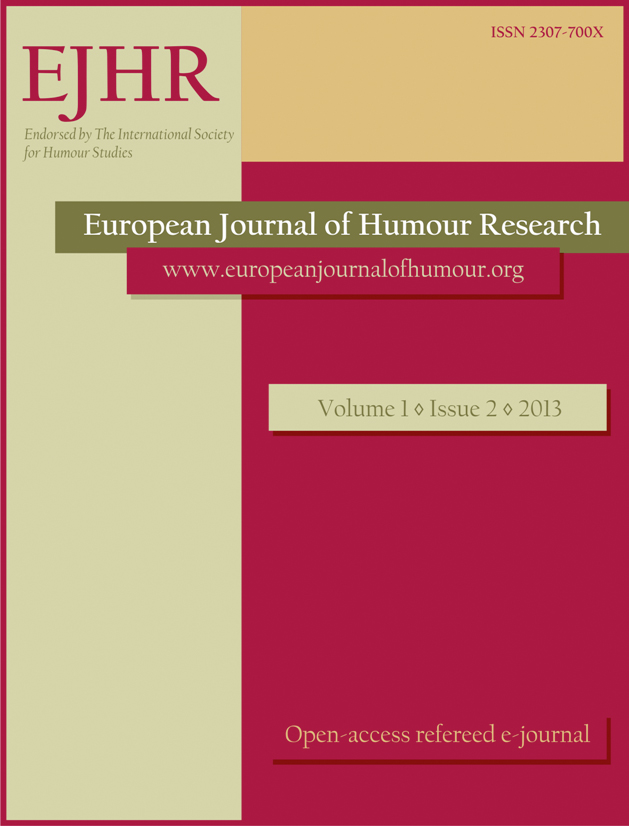
The present study focuses on the sociopragmatic functions of punning which appears to be the most frequent form of humour Greek politicians produce in parliament. The analysis takes into consideration the institutional particularities of this setting: in parliamentary systems such as the Greek one, competition and disagreement among political parties are more intense than in presidential systems, where party coalitions and collaboration are more frequent. More specifically, I will try to answer the following questions: Are puns the only kind of humour appearing in this setting? Why do Greek parliamentarians resort to punning? How does the use of punning relate to the institutional roles Greek parliamentarians are expected to fulfill, as well as to the institutional particularities of the Greek parliament? The data examined comes from the official parliamentary proceedings, in particular from a no-confidence debate which took place in 2007. The analysis suggests that puns are used as a means of showing off verbal skills: parliamentarians try to project themselves as eloquent orators who are capable of outscoring their adversaries in a highly competitive environment. What is more, via puns parliamentarians criticise and attempt to ideologically delegitimise political decisions and practices. Puns are less often used to bring together parliamentarians and highlight their shared experiences and roles. It therefore seems that punning helps parliamentarians to accomplish their institutional tasks, criticism being (one of) the most significant of them all.
More...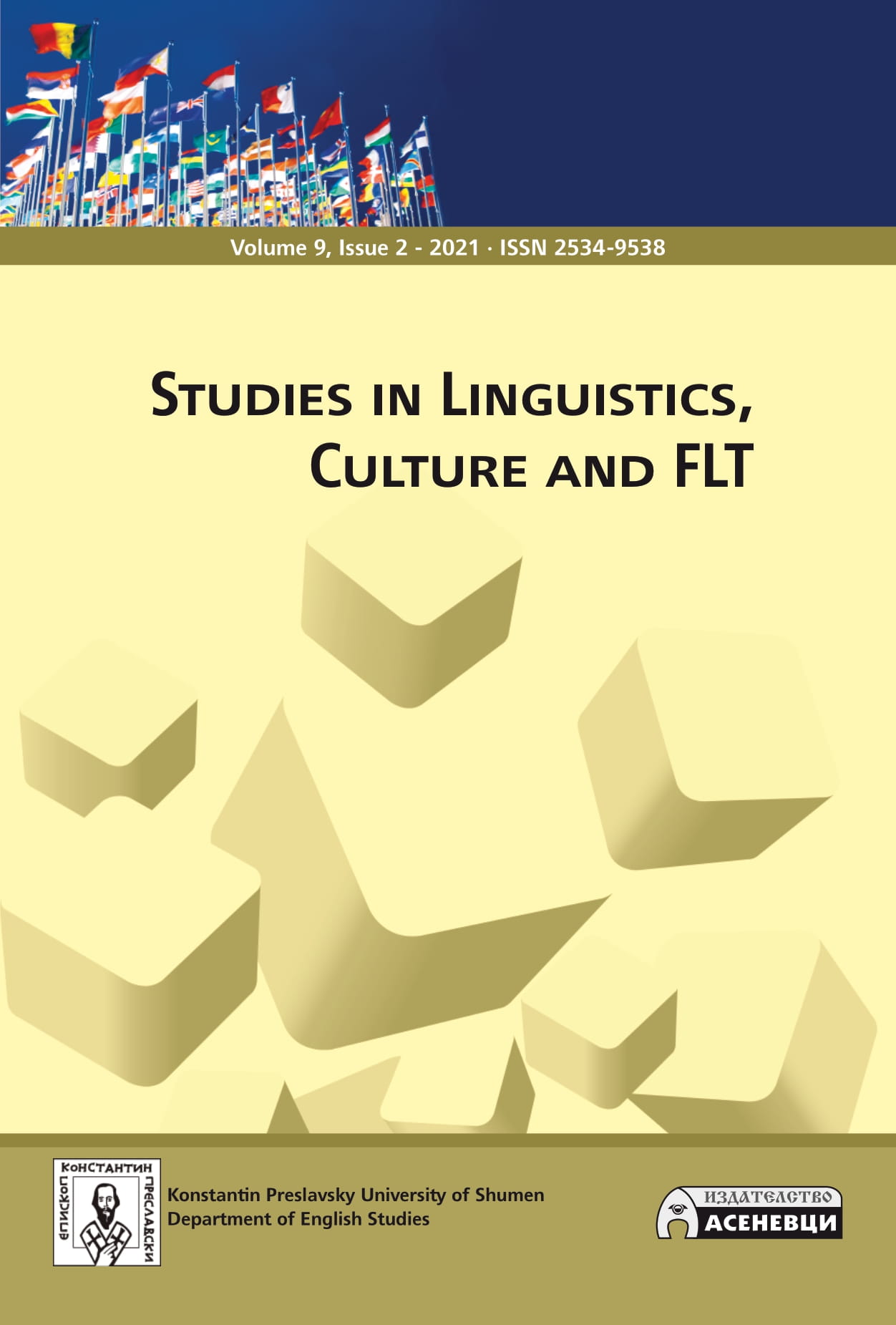
Nonce words or occasionalisms are coined for a particular occasion and usually they are used just once. It is especially difficult when such newly created words have to be translated to another language. This article studies John Harding’s novel Florence & Giles and its Bulgarian translation (by Vladimir Molev). It is a sinister Gothic story told by the 12-year-old Florence living in an isolated New England mansion in 1891. She distorts words by transforming them into other parts of speech, e.g. nouns and adjectives are turned into verbs, nouns into adjectives, adverbs and prepositions into verbs, etc. At first, it could be annoying to the reader, however, once you get used to her narration, it is both fanciful and charming. This research studies the intensely concentrated nonce words in the text and their equivalents in Bulgarian from the point of view of their grammatical, word-formative and semantic characteristics. The contrastive method when applied to the parallel corpus shows some similarities and a lot of differences in the particular characteristics of nonce words due to the specifics of the two languages under discussion.
More...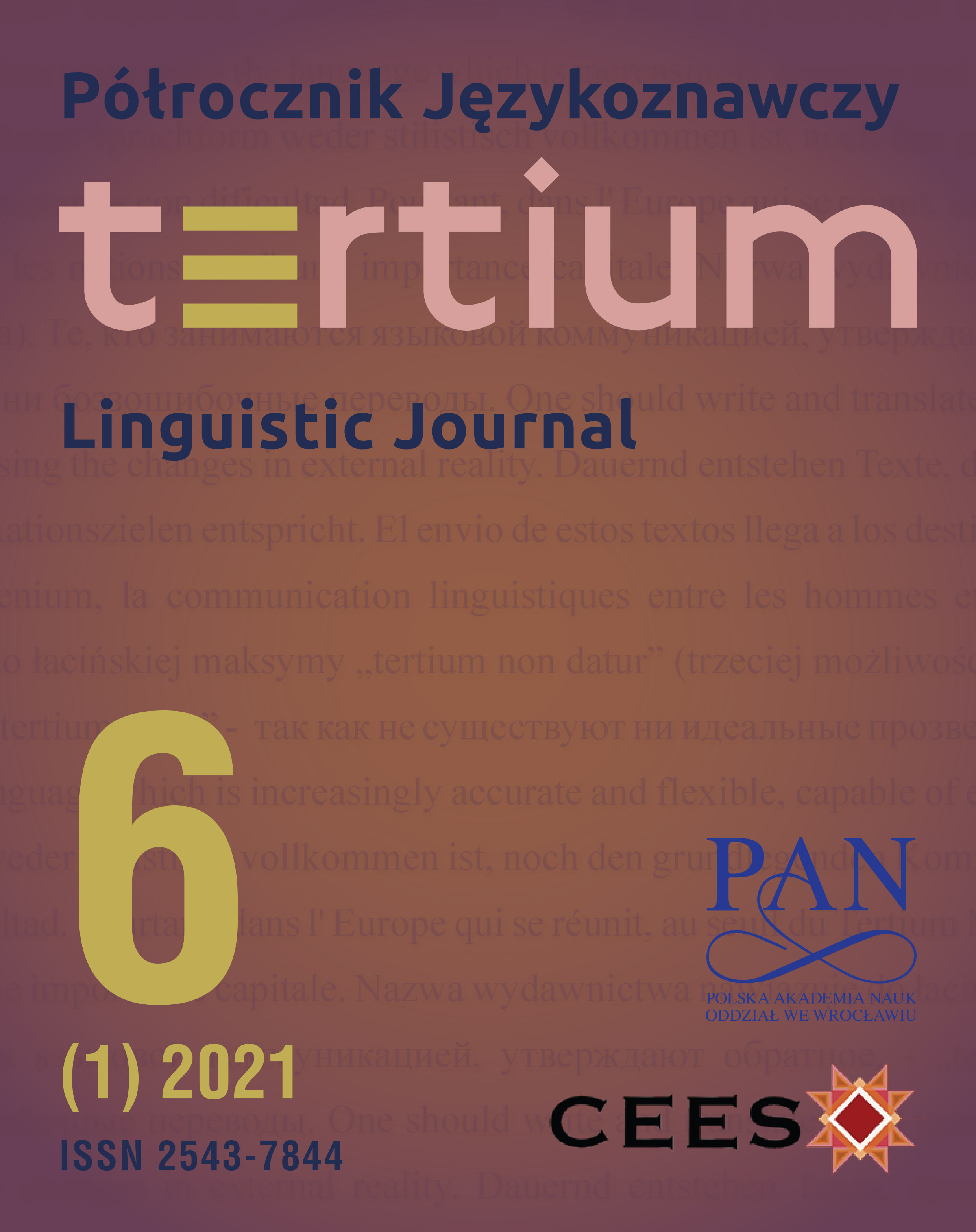
Most linguists consider insults and swear words as interjections carrying an expressivefunction through which the enunciator manifests his/her emotions (Guiraud 1975; Rouayrenc1998). Their function is, therefore, cathartic. The aim of the present study is to provide acontrastive study of insults and swear words. We investigate whether there are specificmorphological or syntactic structures pertaining to insult and swear words, and discuss thecross-cultural similarities and differences in the pragmatic use of this kind of language,focusing on the perspective of politeness. In order to do so, we analyse examples drawn fromHergé’s TinTin and their translation into Greek and English, since this comic is extremelyrich in insults and swear words due to the particularities of the genre of discourse andCaptain Haddock’s expressive character, giving rise to orality and hyperbole. The questionhere is whether the implicit pragmatic and cultural values are the same in all the texts ormaybe there are important differences, derived from the particularities of each of thelanguages of study, which can be traced. It emerged that Greek prefers joined compoundwords and that the chosen utterances reflect all the parameters influencing the original, bethey phonological, semantic, pragmatic or stylistic. In contrast, the English version seems tobe more distant on all levels of linguistic analysis. Accordingly, the (non)preservation of theparameters depends on the peculiarities of, respectively, the Greek, French and Englishlanguages, as well as on the collective images of the recipients. Our conclusions match theconclusions reached in previous research, proving Greek to be rather positive politenessoriented, as opposed to English (see also Romero 2000; Sifianou 2001).
More...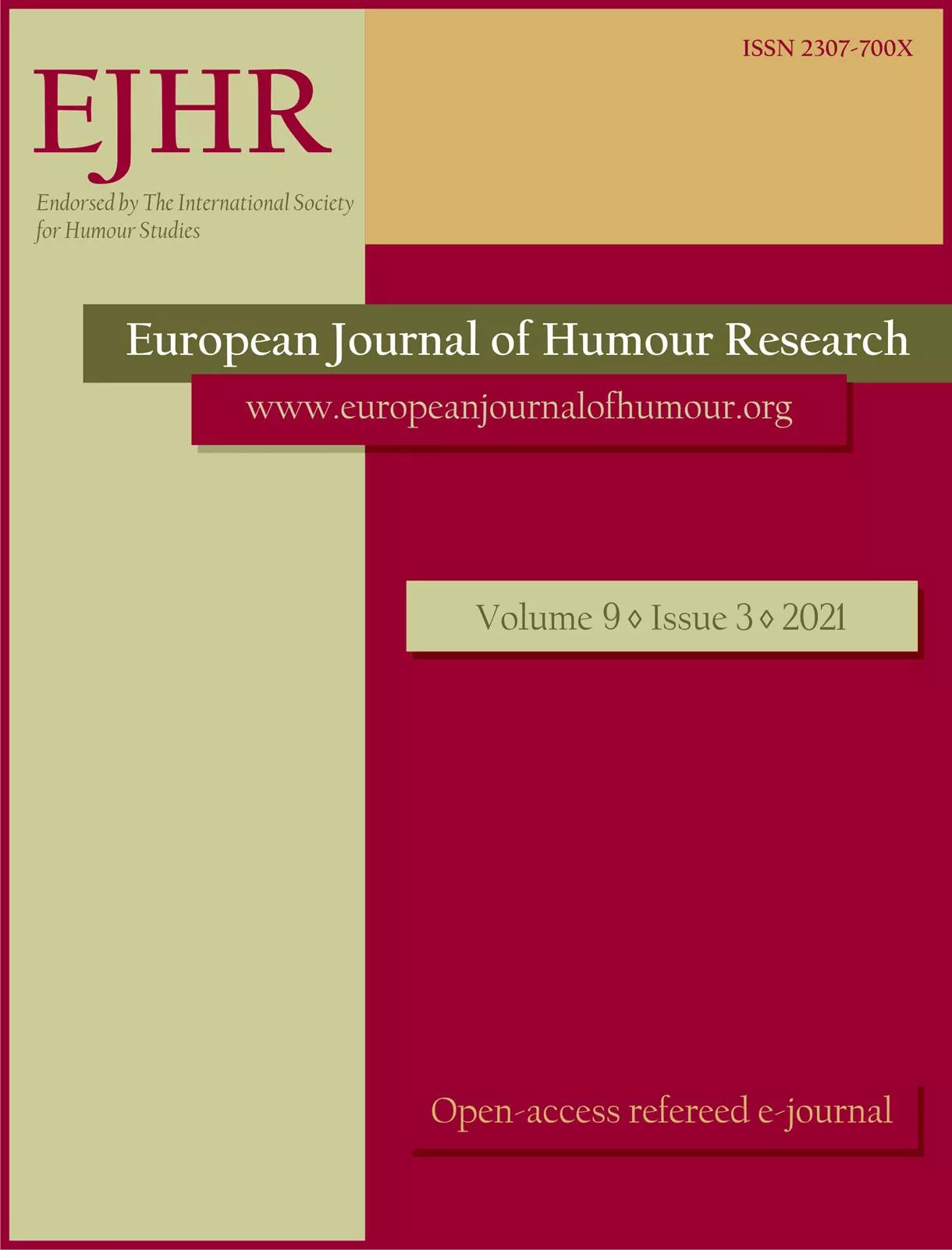
The Arab Spring offered Egyptians a brief opportunity for political freedom of expression; it also offered many creative youths a chance to experiment with their newfound digital talents. However, this was soon followed by a state crackdown on public forms of dissent; subsequently, creative expression had to find other platforms and modalities to continue its practices of playful dissent. Through Mikhail Bakhtin’s (1984) theory of Carnivalesque, this paper examines how Egyptian youths managed to create alternate spaces, other than the highly scrutinised political square, to challenge officialdom and generate their own folk culture through laughter and creative digital arts. This research is based on interviews conducted with administrators and fans of Facebook pages that offer satirical content in the form of memes and remix videos. Fans of these pages mostly belong to the 1980s and 1990s generations, but they also include younger adults whose formative years were those of the Arab Spring. This study argues that, like Bakhtin’s carnival, laughter and everyday comedy was a means by which creative artists could continue to express their opinions and indirect dissent amid intensifying state surveillance. These spaces, therefore, constituted third spaces away from polarised politics, where fans could playfully discuss the comedy away from the heat of events. They were spaces where youths could exercise control over the objects of laughter and challenge established institutions. Like the carnival, youths exercised Carnival practices of both reversal and renewal to craft a new folk culture of their own that did not have to abide by the rules of patronising politics.
More...
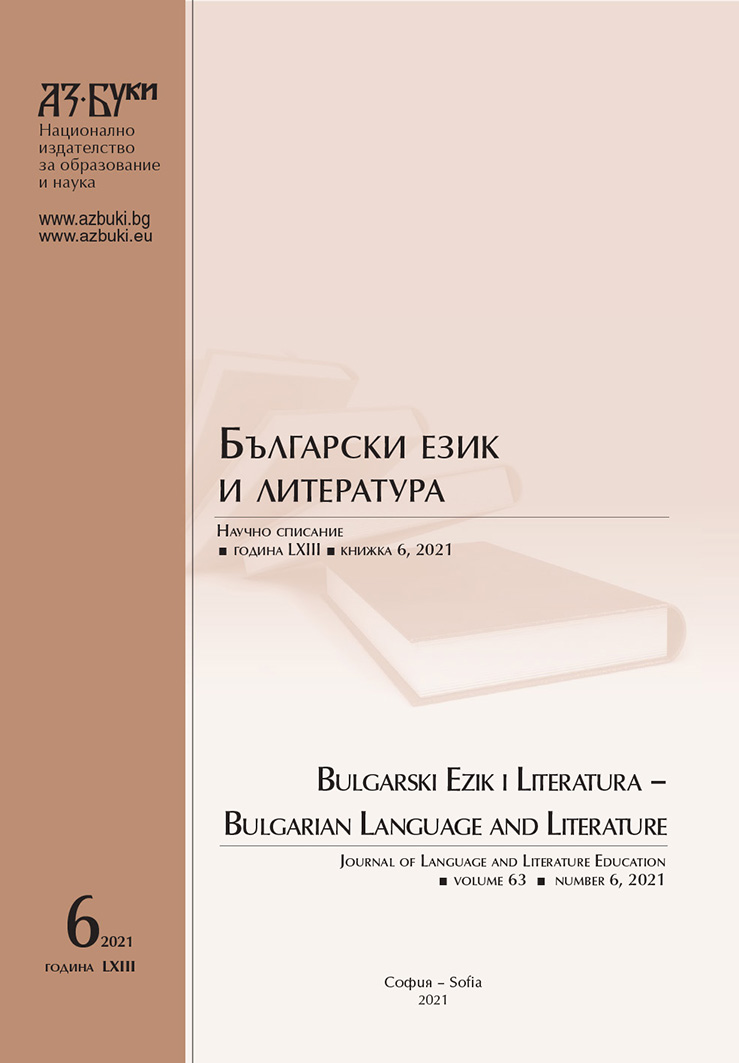
The paper presents the results from a study of the interaction between intonation and information structure in SVO and OVS sentences with communicatively (un)marked alignment of information structure elements. We analyzed the prosodic features of pre-nuclear and nuclear pitch accents. The information structure elements were characterized using Steedman’s (2000) model which classifies sentence constituents as belonging to one of the following categories: theme-background, theme-focus, rheme-background and rheme-focus. Our study found that unmarked and marked alignment has no effect on the pitch range of the rheme-focus. In cases of communicatively unmarked alignment, the pitch range of the theme-background (and rheme-background) group in OVS sentences is wider than in SVO sentences. Word order has no effect on the duration of the accented syllable. Topicalized constituents belonging to the theme-background in OVS sentences with unmarked alignment form separate intermediate phrases. In cases of marked alignment, the rheme-focus ends with a phrase accent and sometimes a pause. The rheme-background and rheme-focus always take a pitch accent, whereas the theme-background is marked by a pitch accent only in cases of communicatively unmarked alignment. The theme-background is deaccented when the sentence is communicatively marked.
More...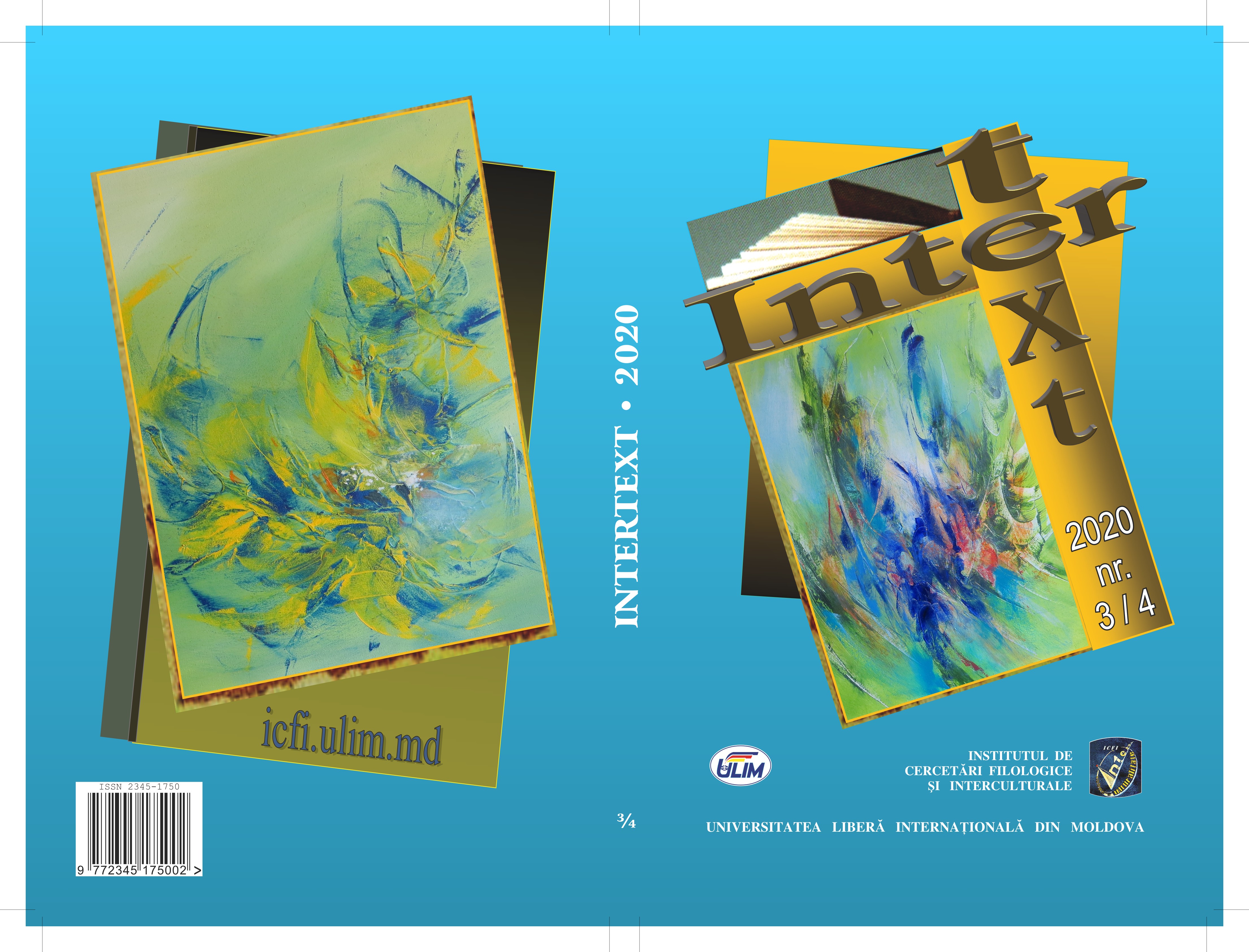
The paper analyzes how English Romanticism gave birth to a poetic care that managed to convey strong feelings to readers. Romanticism has put its mark on the numerous fields of research, but also on the individuality of Man. It is a phenomenon that still has important topics and hypotheses to analyze. We will consider the beauty of their work, the way it was expressed, because it is precisely this concept that is the reference point of the romantic literary phenomenon. In the same way we will also focus on the connection between the author's meditation and the concept of beauty. The preoccupation of the romantics was to give birth to a beautiful eternal to adapt the requirements of the nearby societies in the continuation of the movement. Most of the time, we will see a beautiful relationship, with the ugly antithesis. This is possible in the romantics, because they did not see the opposite of the ugly, but a way of highlighting a unitary system from which the idea that they wanted to present as eloquently as possible came out, using any method of expressing the inner self. They often used contrasting associations, of the beautiful / ugly, finite / infinite, good / bad type. The place where the romantic writer places the action is specific to the romantic lyricism, a favorable place for creation, a place where all the elements form an idyllic frame. English Romanticism was a sort of start on the road to modernity, towards a new sense of aesthetics.
More...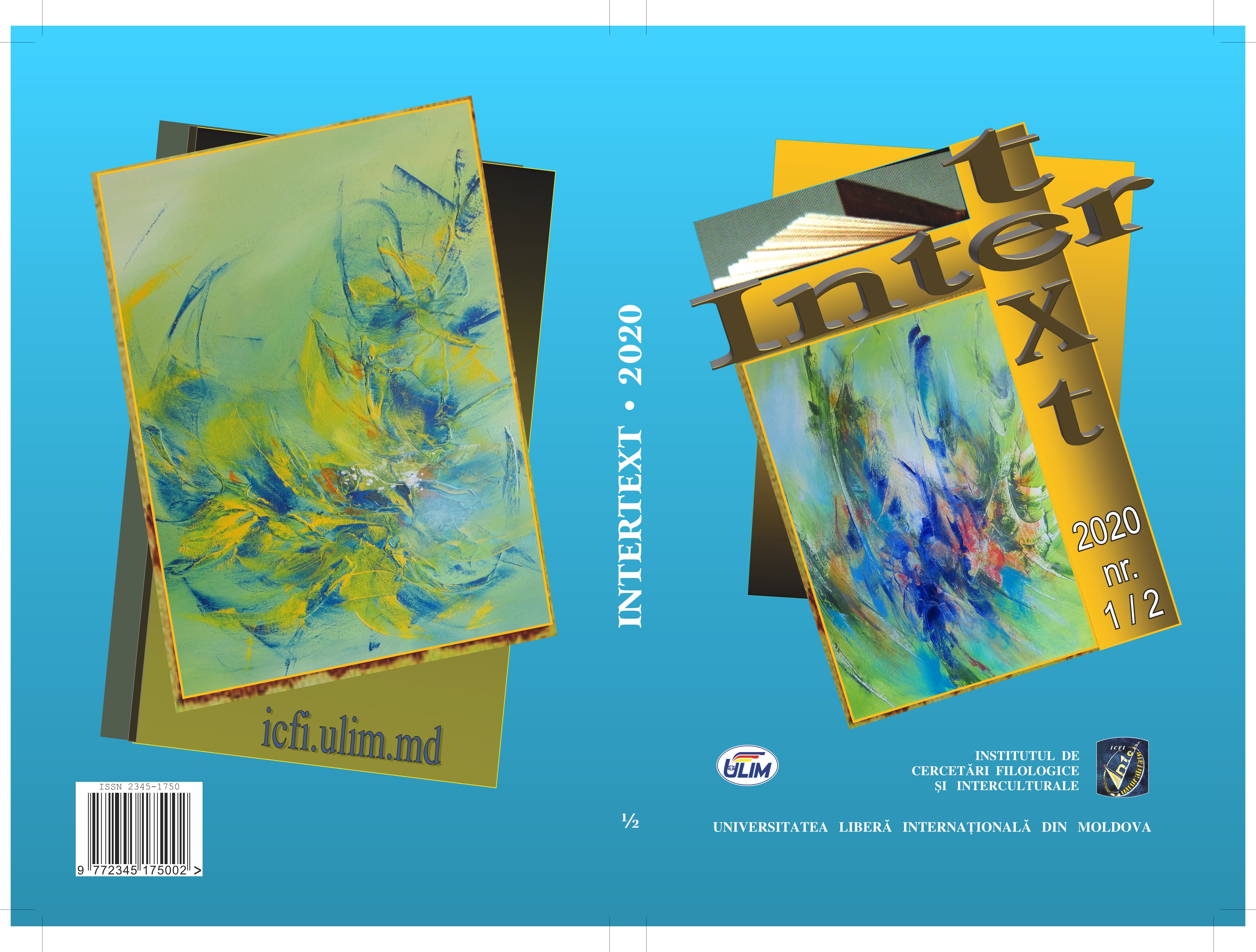
The subject treated by us in the present study reflects the analysis done on some lexical elements of Latin origin extracted for interpretation from "Manuscript 67" from the Library of the Romanian Academy in Bucharest. It contains the complete translation from the Slavonic language of the book "Ithica Ieropolitica" by the monk scholar Vartolomei Măzăreanu, in 1764. In interpreting lexical elements, after the etymology of one term or another is established, the meaning of the words is taken into account, where the context requires it. In most cases, the etymologies were extracted in particular from reference dictionaries such as DA and DLR, in order to determine precisely the lexical elements under study here. The terms encountered in the work of the archimandrite Vartolomei Măzăreanu were selected starting from a semantic dissociation, possible to see clearly, from certain locations, expressions and syntagms in which different lexemes appear attested. Regarding the aspect in which I chose to group the terms, in order not to resemble the way of presenting a dictionary, they were ordered according to their origin, in this case, in elements of Latin origin which, on one hand, they are no longer met in the modern version of the literary Romanian or which have a very limited use, being little known, obsolete or preserved only in certain dialect areas, and, on the other hand, in words created on Romanian land, also derived from words of Latin origin.
More...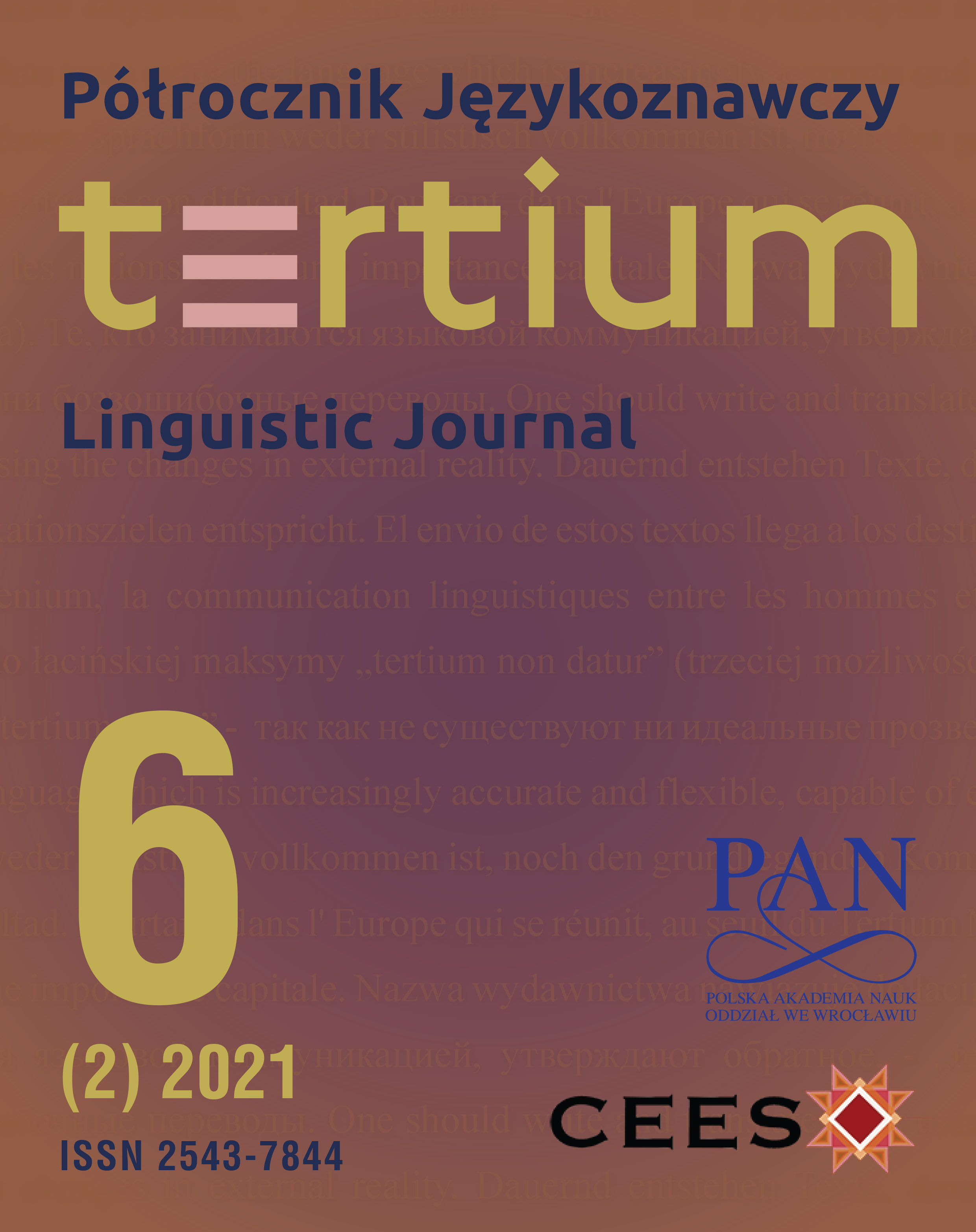
Celem artykułu jest analiza treści (postów, memów) publikowanych przez administratora społeczności wirtualnej „The Language Nerds” w serwisie społecznościowym Instagram, a także wybranych, powiązanych z nimi komentarzy zamieszczanych przez członków społeczności zarówno na Instagramie jak i Facebooku. Badanie jest próbą odpowiedzi na pytanie, jakiego typu treści stanowią zasadnicze spoiwo grupy. W tym celu dokonana została klasyfikacja postów w oparciu o wyróżnione w procesie ich kreowania dominanty funkcjonalne. Wyodrębniono sześć zasadniczych klas: 1. memy o dominującej funkcji humorystycznej, 2. zagadki logicznojęzykowe, 3. posty kreowane w oparciu o specyfikę obrazowania pojęć w danym języku (językowy obraz świata), 4. posty o dominującej funkcji metajęzykowej, 5. posty o dominującej funkcji prezentatywnej (charakteryzujące prototypowego członka grupy własnej), 6. posty o charakterze wypowiedzi argumentacyjnych. Następnie każda z klas została szczegółowo opisana i zilustrowana wybranymi przykładami spośród 220 przebadanych postów. Zawartość treściowa wszystkich wyróżnionych klas wskazuje, że zasadniczym czynnikiem integrującym społeczność jest język, przy czym istotna jest wykazana w badaniu różnorodność perspektyw jego wykorzystania jako narzędzia konstruowania tożsamości członków społeczności. W świetle przeprowadzonej analizy statystycznej największą rolę w generowaniu homogeniczności grupy odgrywa humor językowy. // The aim of the article is to analyse the content (posts, memes) published by the administrator of the virtual community „The Language Nerds” on the social networking service Instagram and also selected related comments posted by the members of the community on both Instagram and Facebook. The study addresses the issue of what kind of content serves to build up the integrity of the group. For this purpose a classification of posts was made with regard to the functions dominating in the process of their creation. Six major classes were identified: 1. memes with humour as the dominant feature, 2. logico-linguistic puzzles, 3. posts created on the basis of how notions are conceptualized in a particular language (Linguistic Worldview), 4. posts with a dominant metalinguistic function, 5. posts in which the function characterizing a prototypical member of the ingroup prevails, 6. posts fashioned as argumentative statements. Subsequently, each class was described in detail and illustrated with examples selected from the set of all of the 220 analysed posts. The content of all the classes distinguished in the research indicates that language is the central factor integrating the community, but – as shown in the study – no less significant is the diversity of focus on the particular aspects of language and its use that serves as a tool for constructing the social identity of the community members. The statistics obtained indicate that it is linguistic humour that plays the most important role in generating group homogeneity.
More...